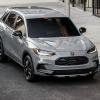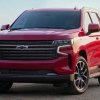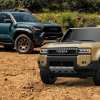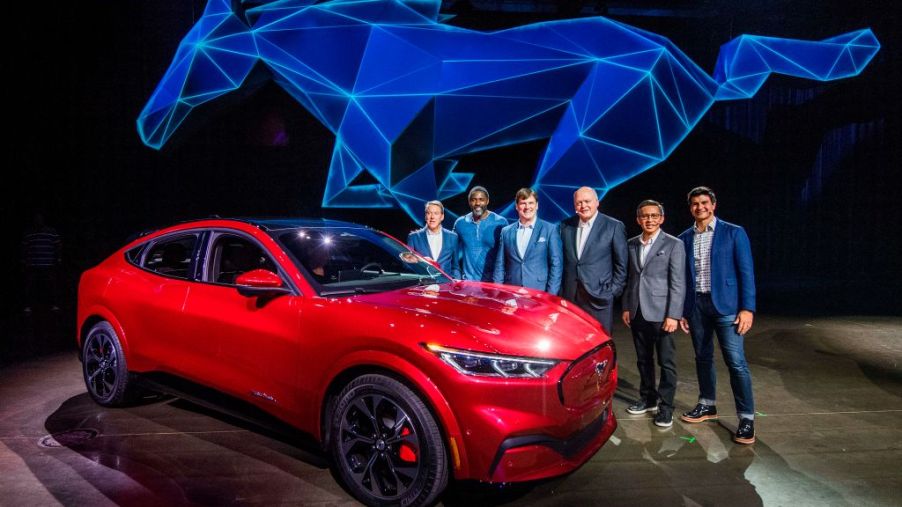
Why Is Ford Only Making 50,000 Mustang Mach-E Vehicles in the First Year?
With the unveiling of the Mustang Mach-E, Ford has checked off two important boxes to meet the demands of the current automotive market. Electrification? Check. SUV? Check. Tesla reacted to the news by tweeting a video of its new Cybertruck in a tug-of-war with a Ford F-150.
Tesla’s response aside, Ford has high hopes for the already-controversial electric SUV with pony badging. But if this is true, why is the automaker planning to produce only 50,000 of them in its first year? Steve Loveday at InsideEVs.com helps us to understand the reasoning behind this number.
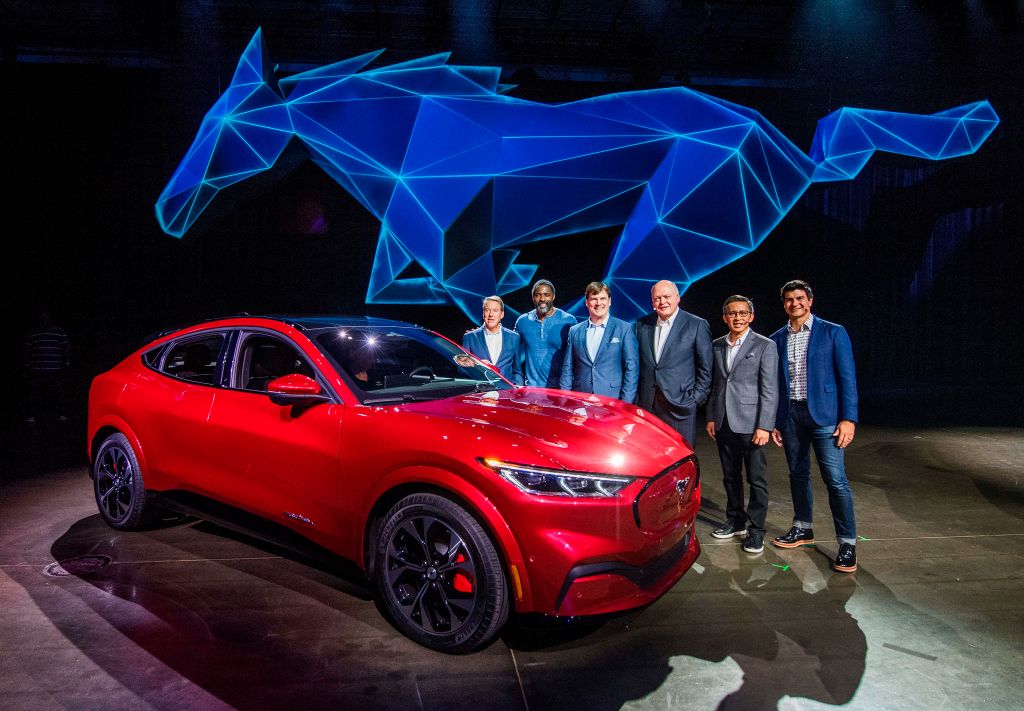
A reality check for Ford’s production numbers
Last month Ford announced its plans to release the five-door Mustang Mach-E ahead of the Los Angeles Auto Show in late 2020 as a 2021 model. After journalists and industry specialists scrambled to find out just how many of the five-door electric SUVs Ford plans to make, Ford industry expert Ian Thibodeau of The Detroit News posted an answer.
Thibodeau quoted Ford President of Automotive Joe Hinrichs as saying that the carmaker would make 50,000 of the Mach-E models in its first production year. This number was limited, according to Hinrichs, by battery availability.
This number doesn’t sound like a lot when you compare it to traditional vehicle production where six and seven figures are more common. And while only 50,000 sounds like a bit of a letdown, it helps to put these numbers in the right context. In the EV universe, producing 50,000 SUVs in the first year of production isn’t trivial.
How many vehicles can other companies make?
By comparison, this year so far Tesla has rolled out and sold just 14,100 of its electric SUVs, the Model X. And back in 2017, the EV manufacturer was able to produce only 1,764 of its popular Model 3s in the first six months of production. The following year, however, Tesla delivered more than 140,000 Model 3s.
While Tesla had a slow start, it certainly has caught up in filling customer orders. In 2019, it’s averaged sales of 12,500 Model 3s a month or about 150,000 cars a year. While Ford won’t be able to match that number initially, it looks as if it’s off to a strong start.
Other carmakers haven’t had as an impressive showing as Tesla in EV production, either. Jaguar sells a mere 200 I-Paces a month. The Audi E-Tron, a plug-in SUV, is averaging about 600 sales a month. As for the Chevrolet Bolt, its sales numbered about 13,100 to date this year. The Chevy EV’s first year saw only 23,000 produced.
Ford’s projection of 50,000 EVs isn’t mind-blowing. Yet it’s significant enough to show both its commitment to electrification and its response to customers who are concerned about climate change. It also puts Tesla on notice that one member of the Big Three wants to be a serious contender in the EV race.
Production numbers don’t tell the whole story
With Tesla unveiling its innovative Cybertruck only two days after Ford’s reveal of the Mustang Mach-E, it’s hard not to make comparisons in production figures. But, in some ways, it’s an apples-to-oranges comparison.
For one thing, Tesla has historically overreached on its production plans. The 3,000 unit per week plan for the Model 3 didn’t go as planned. Elon Musk may have tweeted about having 200,000 orders for the Cybertruck a few days after it was unveiled. However, the truck won’t be rolled out for at least two or three years.
As with previous Tesla production plans, random things could go awry with vendors, supply chains, or budgets between now and 2022. We simply do not know.
But Ford, as a veteran automaker, has been burned more than once in its 116 years of existence. It has experienced firsthand the consequences of overshooting on production numbers. So, an estimate of 50,000 Mach-Es, while optimistic, may ultimately not be too far off the mark.
And at the bottom of it all, the Mach-E is a real vehicle with a solid promise to go into production next year. Ford understands that its customers may want an electric SUV or pickup truck and appreciate good design. Unlike Tesla customers, though, they may not care as much about extreme novelty, as exhibited by the Cybertruck.
Battery availability could indeed prove to be a real challenge for Ford next year. Mach-E buyers will be able to choose from either a 75.7 kWh battery that delivers 255 hp or the 98.8 kWh extended battery that makes 282 hp. Regardless of which option buyers go for, 50,000 EV batteries are still a lot to move through Ford’s supply chain.
But the automaker knows what risks it’s facing by projecting the Mach-E’s numbers. And since the Mustang Mach-E First Edition version sold out online nine days after Ford’s announcement, it looks as if the Blue Oval might make a good showing in the American EV market after all.
